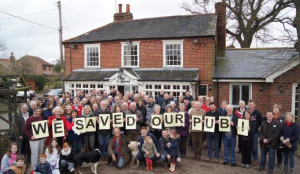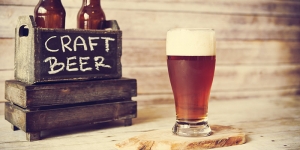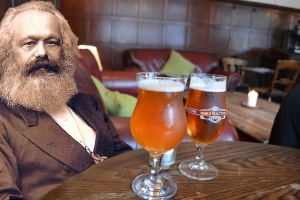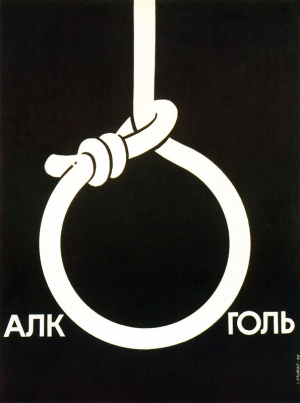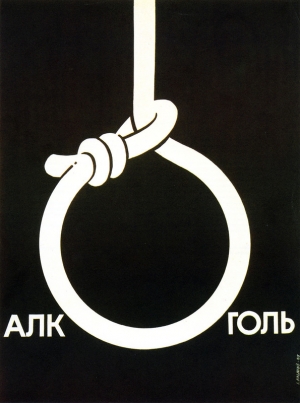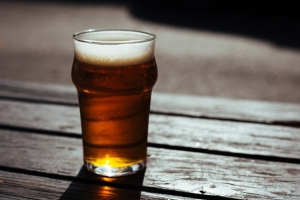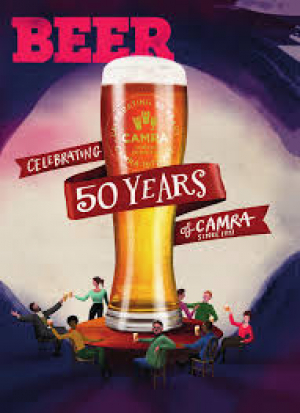
CAMRA at 50: will it combat Big Beer?
Keith Flett mulls over CAMRA's history and its options for future campaigning activity
CAMRA is 50 years old in March. That is quite an achievement for a voluntary campaign, implying at least renewal through several generations of activists, something which is often hard to achieve. It now has 170,000 members and most will be active at least in the sense of promoting CAMRA’s raison d’etre, the production and drinking of good beer.
It is not a party political organisation or, in the main, a campaign that takes capital ‘P’ political decisions. After all drinkers of decent beer come with all kinds of opinions and none. All that said of course there are politics. That can’t be avoided for any campaign that operates in a capitalist market economy.
CAMRA is neither pro or anti-capitalist as such but strongly in favour of a ‘moral economy’ of beer. That is, a society where brewers and publicans can make a fair profit but the quality, price and supply of beer are influenced by ordinary drinkers.
When CAMRA started the outlook for beer and pubs was poor indeed. There had been a long process, accelerating from the 1950s, of brewery consolidation. That meant takeovers and closures. By the early 1970s beer in Britain was very largely controlled by what was known as the Big Six – giant brewing concerns such as Courage, Watneys and Whitbread. Since the breweries also owned most of the pubs, that meant a significant restriction of choice for the drinker at the bar. To put it in perspective, in 2021 London has well over 100 independent breweries. 50 years ago there were just two – Fullers and Youngs.
There was also the question of the beer the Big Six were producing. With the consolidation big brewing operations brought , cost reduction was looked for. That meant a move away from traditional cask beer to pasteurised keg beer, which was much easier to transport and keep in the pub without cellaring skills. One problem was that for many beer drinkers this cold, fizzy beer, served under gas pressure, was either tasteless or had a distinctly unpleasant taste. A related problem was often that as breweries owned the pubs, there was little escape from keg.
The beer writer Richard Boston wrote in his 1970s Guardian column of areas of East Anglia where if you didn’t want the Watneys Red Barrel served in one pub you could always try another. The problem was that also sold Watneys. There was a lot for CAMRA to oppose and that meant it had no choice but to confront the Big Six, aka Big Beer. That meant a range of campaigning tactics. The Big Six were lampooned – Watneys became Grotnys and Whitbread Twitbread. Pubs were boycotted and those that sold traditional cask ale promoted. The first Good Beer Guide to CAMRA-approved pubs appeared in 1974. At the same time campaigning pressure was exerted on the Big Six to draw back from keg and start selling cask beer again. Over time this campaigning pressure worked. Allied breweries were first producing a cask Burton Ale from 1976. Even Watneys finally gave in and brewed Fined Bitter real ale.
CAMRA pressure on large companies had its impact. They had to change their strategies and plans. Capital constantly revolutionises itself, or tries to, however and no battle against it within its framework is ever definitively won. The Big Six had to return to cask beer and more pubs now sold it. But the choice remained very limited. In early Good Beer Guides, symbols were used to show the range of beer available. To stretch beyond a mild, an ordinary and best or special bitter was unusual. Beer from the remaining independent breweries – around 100 of them – was very hard to come by, outside of their own local area.
CAMRA’s focus shifted to an extent to lobbying for changes in the law, under a Tory Government. No easy matter clearly, but it was achieved. The Beer Orders restricted the number of a pubs a brewery could own. That meant pubs were sold and saw the rise of pub companies. At the same time there was legal provision for a guest beer to be sold in pubs which were tied to particular breweries. Again it was a pursuit of the moral economy strategy of CAMRA – not ending the control of capital but tempering it in the interests of drinkers.
That was 30 years ago and capital has not stood still since. If the first wave of Big Beer had been successfully grappled with by CAMRA, a new wave appeared that posed significant new challenges. If you want a pint of Courage Best or Whitbread Bitter you won’t find one in 2021. The Big Six companies that once dominated British brewing are long gone. Even the classic and benchmark pale ale, Bass, is hard to come by. Its recent history summaries well where Big Beer has now gone.
The Bass brewery in Burton is owned by Molson Coors, a US/Canadian brewing giant. The actual beer however is owned by another huge brewing operation, ABInBev. It is based in Belgium but has significant interests across the world – in Latin America and South Africa, for example. However, it has contracted out the brewing of the beer to Marstons, one of the larger UK-based brewers and pub companies. Or it was – in 2020 it sold a majority stake in its brewing operations to Danish brewer Carlsberg.
Grappling with UK brewers as CAMRA did successfully in the 1970s and 1980s is one thing. Trying to take on global brands is a rather different matter. The focus has shifted to some extent to supporting those larger brewers that remained UK owned – albeit often supporters of the Tory Party. However Big Beer has marched on here as well. As well as Marstons, Fullers’ brewing operations were brought by Japanese brewer Asahi and Greene King is now owned by a Hong Kong businessman. Nor has it stopped there. Some of the larger craft brewers whose backgrounds had rested on the idea of independence from Big Beer have ended up being swallowed by it. Heineken has a 49% stake in Beavertown while ABInBev owns Camden.
This is not a counsel of despair. CAMRA remains a large organisation with the capacity to campaign and influence. It’s fairly clear though that on its 50th birthday the original model – even with later tweaks – of promoting a moral economy of beer, not anti-capitalist but for a constraining influence on it, needs to be re-thought.
Firstly, CAMRA could do more to combat Big Beer on a global basis. Consumer organisations around beer, like CAMRA, exist in a number of European countries and the US. There are long-standing links which could be developed and mobilised further. That is easier now using global communications apps like Zoom. The trade union and anti-war movements have been co-ordinating activity across the world for a while.
Secondly, CAMRA could look to build on its original campaigning focus. It’s very good at lobbying MPs and Government for legislative changes, but the protests of the 1970s about brewery closures or takeovers are now rare. To some extent this relates to an ageing membership, but with the rise of movements like Black Lives Matter and Extinction Rebellion, it’s clear that the mood to protest which was there in the early days of CAMRA is back again.
In practice both of these could be done, but a lot does depend on managing to engage and mobilise younger drinkers in a way CAMRA did so successfully 50 years ago.


